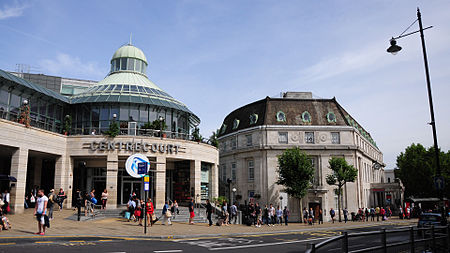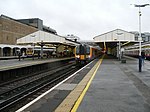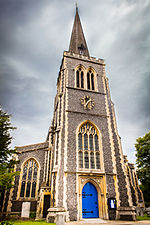Wimbledon, London

Wimbledon () is a district and town of Southwest London, England, 7.0 miles (11.3 km) southwest of the centre of London at Charing Cross; it is the main commercial centre of the London Borough of Merton. Wimbledon had a population of 68,187 in 2011 which includes the electoral wards of Abbey, Dundonald, Hillside, Trinity, Village, Raynes Park and Wimbledon Park.It is home to the Wimbledon Championships and New Wimbledon Theatre, and contains Wimbledon Common, one of the largest areas of common land in London. The residential and retail area is split into two sections known as the "village" and the "town", with the High Street being the rebuilding of the original medieval village, and the "town" having first developed gradually after the building of the railway station in 1838. Wimbledon has been inhabited since at least the Iron Age when the hill fort on Wimbledon Common is thought to have been constructed. In 1086 when the Domesday Book was compiled, Wimbledon was part of the manor of Mortlake. The ownership of the manor of Wimbledon changed between various wealthy families many times during its history, and the area also attracted other wealthy families who built large houses such as Eagle House, Wimbledon Manor House and Warren House. The village developed with a stable rural population coexisting with nobility and wealthy merchants from the city. In the 18th century the Dog and Fox public house became a stop on the stagecoach run from London to Portsmouth, then in 1838 the London and South Western Railway (L&SWR) opened a station to the southeast of the village at the bottom of Wimbledon Hill. The location of the station shifted the focus of the town's subsequent growth away from the original village centre. Wimbledon had its own borough while still in the county of Surrey; it was absorbed into the London Borough of Merton as part of the creation of Greater London in 1965. Wimbledon has established minority groups; among the prominent ones being British Asians (including British Sri Lankans), British Ghanaians, Poles and Irish people.
Excerpt from the Wikipedia article Wimbledon, London (License: CC BY-SA 3.0, Authors, Images).Wimbledon, London
Wimbledon Hill Road, London Wimbledon Village (London Borough of Merton)
Geographical coordinates (GPS) Address Website Nearby Places Show on map
Geographical coordinates (GPS)
| Latitude | Longitude |
|---|---|
| N 51.422 ° | E -0.208 ° |
Address
The Alexandra
Wimbledon Hill Road 31-33
SW19 7NE London, Wimbledon Village (London Borough of Merton)
England, United Kingdom
Open on Google Maps







